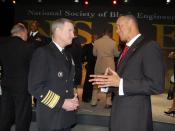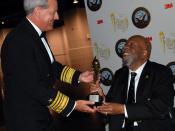In 1971, two Purdue undergraduate students, Edward Barnette (now deceased) and Fred Cooper approached the dean of engineering at Purdue University with the concept of starting the Black Society of Engineers (BSE). They wanted to establish a student organization to help improve the recruitment and retention of black engineering students. In the late 1960?s, a devastating 80 percent of the black freshmen entering the engineering program dropped out. The dean agreed to the idea and assigned the only black faculty member on staff, Arthur J. Bond, as advisor.
Barnett served as the first president of the BSE. The fledging group gained momentum in 1974, with the direction and encouragement of Bond and the active participation of the young men whose destiny was to become the founders of NSBE. Now known as the "Chicago Six", these men are Anthony Harris, Brian Harris, Stanley L. Kirtley, John W. Logan, Jr., Edward A.
Coleman, and George A. Smith.
Encouraged by their on-campus success, Anthony Harris, president of the Purdue chapter, wrote a letter to the presidents and deans of every accredited engineering program in the country (288), explained the Society of Black Engineers (SBE) concept and asked them to identify black student leaders, organizations and faculty members who might support their efforts on a national basis. Approximately 80 schools responded. Many had similar Black student organizations with similar objectives. A date was set for the first national meeting and 48 students representing 32 schools attended the event, held April 10-12, 1975. Harris also changed the organizations? nomenclature from the BSE to the Society of Black Engineers (SBE).
It was at that historic meeting through majority vote, that SBE became the National Society of Black Engineers. The familiar NSBE symbol "N" with lightning bolts was chosen and it remains a distinctively recognizable symbol...


